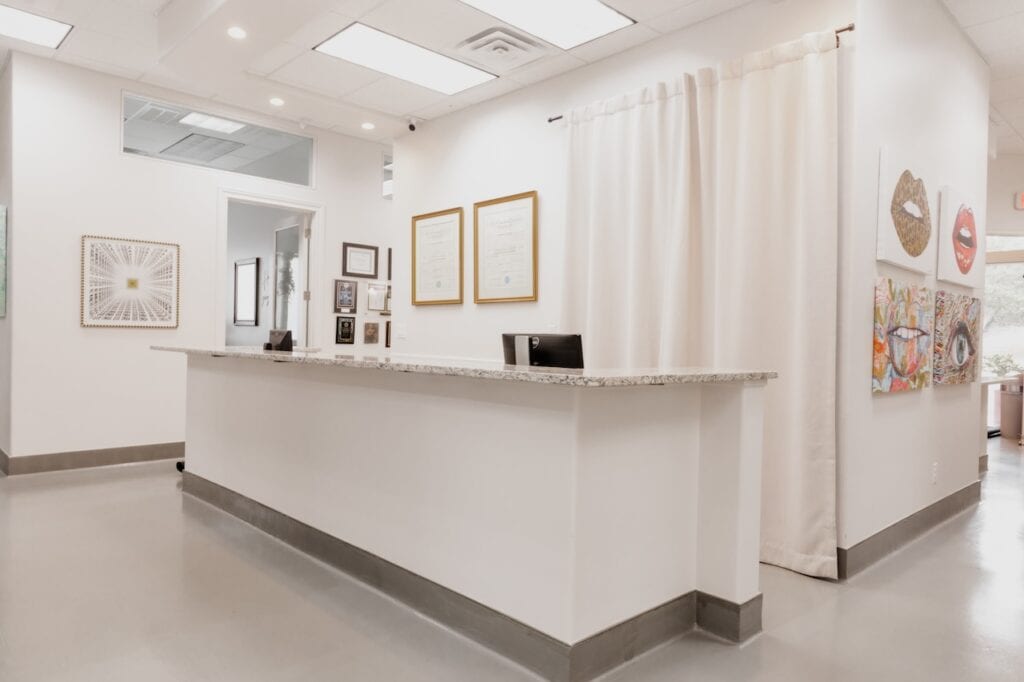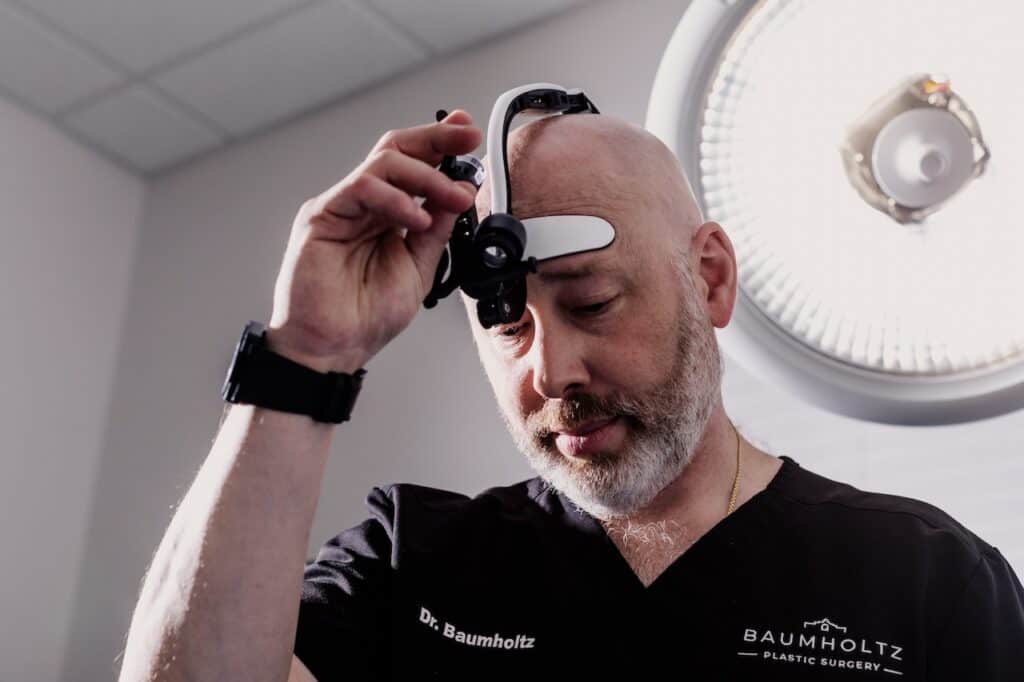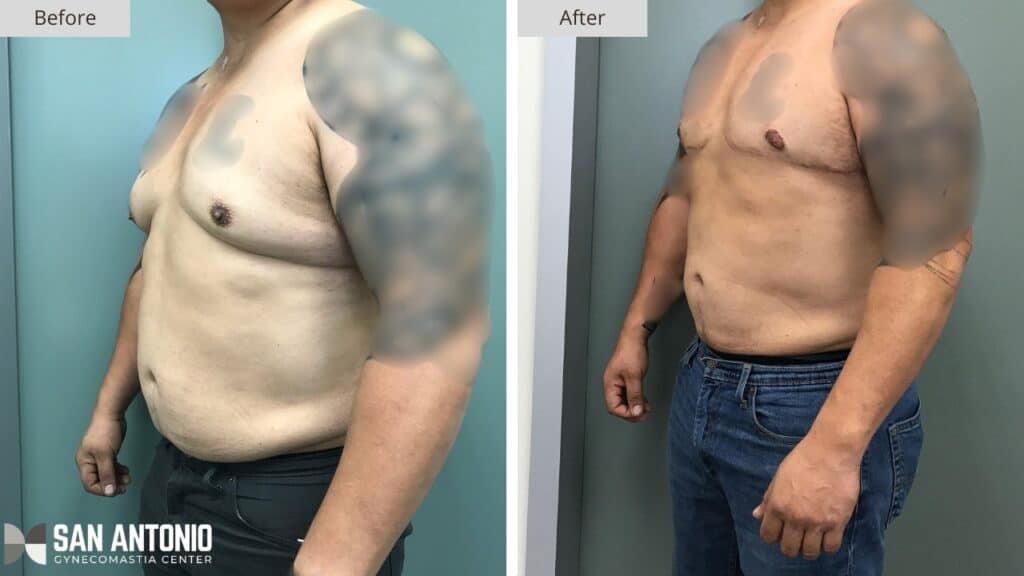If you’re considering gynecomastia surgery, it’s important to understand the entire journey – from getting ready for the operation to recovering afterward.
In this overview, we’ll take you through the entire process, highlighting the important steps before and after surgery. By giving you insight into what to expect and how to navigate your transformation, we aim to help you feel more confident about your decision.
Read over the timeline below to get a better understanding of what our top San Antonio gynecomastia doctor will walk you through – before, during, and after surgery.
Types of Gynecomastia
Although each gynecomastia surgery case is unique, there’s a general timeline you can anticipate. This timeline is pretty consistent across various types of gynecomastia surgeries you might undergo, including:
- Adult Gynecomastia
- Adolescent Gynecomastia
- Bodybuilder Gynecomastia
- Gyno Revision Surgery
- Pseudogynecomastia
- Puffy Nipples
- Senior Gynecomastia
- Gynecomastia Post Weight Loss
Gynecomastia surgery also varies according to several factors – for instance, your gynecomastia stage and the anesthetic used can be two of the biggest variables to consider. As you go through your pre-op appointments, you will get a better overall sense of what to expect for your surgery.
Pre-Op
A thorough preparation is essential before undergoing gynecomastia surgery. This phase involves consultations with our board-certified plastic surgeon to discuss expectations, medical history, and surgical options.
Your surgeon will conduct a physical examination and may recommend additional tests to ensure you are a suitable candidate for surgery. Pre-operative instructions will cover aspects such as medication adjustments, lifestyle changes, and dietary considerations to optimize your surgical outcome.
Before the big day, you will also have your pre-op photos taken and ensure that you’re properly prepared for surgery. During this time, you will be given a compression vest and other recovery items for your surgical healing.

Gynecomastia Surgery Day
On the day of your surgery, you’ll arrive at our San Antonio surgical facility prepared for the procedure. Pre-operative protocols may include fasting before surgery and abstaining from certain medications, as instructed by your surgeon. The surgical team, consisting of nurses and anesthesiologists, will greet you and guide you through the final pre-operative checks and preparations.
Anesthesia: Anesthesia plays a crucial role in ensuring a comfortable and safe surgical experience. Most gynecomastia surgeries are performed under general anesthesia. This allows you to remain unconscious throughout the procedure. Your anesthesiologist will administer the anesthesia intravenously and monitor your vital signs closely throughout the surgery to ensure your safety and comfort.
Surgical Procedure: The surgical approach for gynecomastia varies depending on the extent of tissue enlargement and the desired outcome. Common techniques include liposuction, excision of glandular tissue, or a combination of both. Your surgeon will carefully perform the planned procedure, sculpting the chest to achieve a more masculine contour while minimizing scarring.
Recovery Room: After the completion of the surgery, you’ll be transferred to a recovery area where you’ll gradually wake up from anesthesia under the supervision of trained medical staff. Pain management protocols will be initiated to ensure your comfort during the initial recovery period. You may experience some swelling, bruising, and discomfort, which are typical after gynecomastia surgery.

Post – Op
After gynecomastia surgery is complete, it is time to start the postoperative recovery process. Throughout this time, patients will slowly and carefully transition back to their normal daily activities, as well as come in for a handful of follow-up appointments.
During this post-op period, managing pain, minimizing swelling, optimizing healing, and adhering to our surgeon’s guidelines are important. Before you know it, you can fully enjoy the chest you have always desired.
1 Day Post-Surgery
On the day after surgery, you will have your first post-op appointment. Your surgeon will complete a thorough evaluation and may remove the bandages and drains. You can start your journey to recovery, as you adhere to postoperative guidelines for optimal healing.
- Bandage Removal: Your bandage will be removed, allowing you to shower again within 1-2 days.
- Arm Movement Limitation: You should limit arm motion, and avoid raising arms above chest level or engaging in overhead lifting.
- Drain Removal: If drains were placed during surgery, they may be removed at this stage.
- Driving: After approximately 72 hours, you can resume driving.
1 Week Post-Surgery
In the first week following surgery, patients gradually ease back into daily activities while continuing to wear compression garments. There will be another follow-up appointment that allows your surgeon to monitor progress and ensure a smooth recovery process.
- Normal Activities: You can gradually transition back to normal activities. However, you still must avoid strenuous exercise and heavy lifting.
- Compression Garment: Be sure to continue to wear a compression garment to minimize swelling and support chest contour.
- Follow-Up Appointment: You will attend a follow-up appointment for an incision check and assessment of progress.
2 Weeks Post-Surgery
Around the two-week post-surgery mark, patients can resume light exercise while being cautious about arm movements. During this period, it is still very important to balance recovery along with the gradual reintegration of physical activities.
- Light Exercise Resumption: Light lower-body exercises like using an exercise bicycle or squats may resume.
- Limited Arm Motion: Continue to limit arm motion to promote healing.
1 Month Post-Surgery
Between three to five weeks post-surgery, patients will begin to notice increased arm mobility. It is during this phase that you may also stop using a compression vest. There will be another post-op appointment during this time with your surgeon to ensure all is going according to plan.
- Increased Arm Motion: Expect an increased range of arm motion, though caution should still be exercised.
- Compression Vest Removal: Generally, you can discontinue wearing the compression vest around this time.
- Limited Upper-Body Workouts: There may be limited upper-body workouts introduced into your workout routine as advised by your surgeon.
3 Months Post-Op
As you close in on the three-month mark, patients undergo a thorough post-op examination to assess scar healing. Around this time, you may be cleared for full physical activity. This stage marks a significant milestone in the recovery journey, with most patients experiencing substantial improvement in chest contour and overall well-being.
- Healing Check-Up: Check scars to ensure proper healing.
- Physical Activity: You can begin to engage in most physical activity, including high-impact exercises.
6 Months Post-Op
After around 6 months or so there may be another follow up with your surgeon. This appointment serves as an opportunity for the surgeon to assess the final outcome of the procedure, address any lingering concerns, and provide guidance for long-term care.
- Comprehensive Evaluation: Patients undergo a thorough assessment of their progress, focusing on the final outcome of the surgery.
- Chest Contour: The surgeon will evaluate whether the chest contour has settled into its desired shape, and will ensure optimal aesthetic results.
- Residual Swelling: We assess any residual swelling or discomfort to ensure that it has subsided.
1 Year Post-Op
A year post-gynecomastia surgery, patients undergo a final examination to ensure the healing process is complete. This stage signifies the end of the recovery process for most, with patients enjoying the long-term benefits of their procedure.

Gynecomastia Surgery Recovery
Although the above gives a general overview of a post-gynecomastia-surgery timeline, it doesn’t account for everything that might happen after your surgery. Here is some more helpful information.
Additional Things to Know During Gynecomastia Surgery Recovery
As you recover from surgery at the San Antonio Gynecomastia Center, you may notice or experience the following:
Gynecomastia Surgery Recovery FAQs
We get a lot of questions around what recovering from gynecomastia surgery is like. Here are some answers to the most frequently asked questions.
While you may start feeling better within a few weeks after gynecomastia surgery, full recovery typically takes several months. However, you can usually resume your normal daily activities within 4-6 weeks post-surgery. Note that you might need to wait a little while longer to engage in extensive exercise.
You should wear your compression garment continuously, except during showers, for at least 4 weeks post-surgery. For optimal results, continue wearing it half-day for an additional 2 weeks. This garment aids in reducing swelling and supports proper healing.
With the use of a compression garment, you should notice a gradual decrease in swelling during the 4-6 weeks following gynecomastia surgery.
Following gynecomastia surgery, it’s crucial to sleep on your back for at least three days to promote optimal healing and minimize discomfort in the treated area. Sleeping at a 45-degree angle can further support the healing process and alleviate any potential discomfort. This position helps reduce pressure on the surgical site and ensures proper blood circulation.
The timeline for resuming exercise after gynecomastia surgery varies depending on the intensity of the activity. Two weeks after surgery, patients can typically resume lower-body exercises. Upper-body and high-intensity activities may need to wait until around two months post-surgery.
Once fully healed, you can start chest exercises like flys, bench presses, and push-ups to sculpt your chest. Cardio activities such as running, swimming, or HIIT can also help tone your overall physique.
After gynecomastia surgery, it’s important to avoid strenuous exercise, heavy lifting, and direct sun exposure. Additionally, refrain from scratching or picking at incisions, and be sure to wear the compression garment as directed by your surgeon.
At the San Antonio Gynecomastia Center, we prioritize delivering exceptional care from your initial consultation to your recovery and beyond. We deeply value the trust you place in us and are committed to upholding the highest standards of patient care. Our team, led by board-certified gynecomastia plastic surgeon specialist, Dr. Michael Baumholtz, is devoted to achieving optimal outcomes for each individual. Recognizing that every person is unique, we personalize our approach to meet your specific needs. Whether you have questions or are ready to schedule your in-person or virtual consultation, please don’t hesitate to contact us today. We’re here to support you every step of the way!
San Antonio Gynecomastia Center
4083 De Zavala Rd #1A
San Antonio, TX 78249
(210) 960-8051

